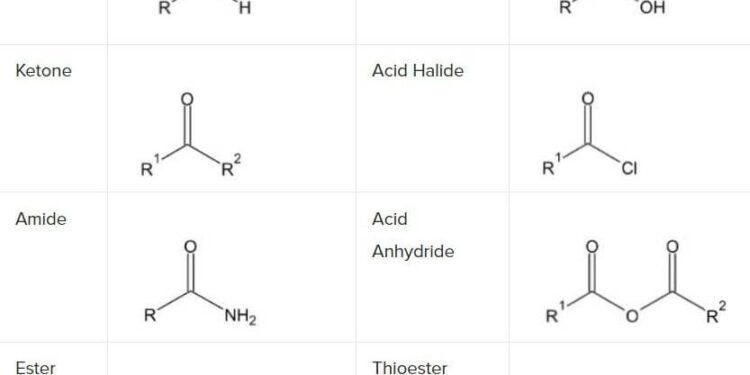Title: Unveiling the Role of Carbonyl Compounds in Coastal Ozone Dynamics: A Closer Look at Shantou, China
As coastal cities grapple with escalating air quality concerns, understanding the intricate mechanisms behind ozone formation has become increasingly vital. Shantou, a bustling port city in eastern China, is no exception. Recent research published in ScienceDirect highlights the critical significance of carbonyl compounds in the photochemical reactions that contribute to ozone levels in this rapidly industrializing region. With its unique geographical traits and an ever-growing population, Shantou serves as a compelling case study for scientists seeking to unravel the complexities of urban air pollution. As local authorities and residents confront the dual challenges of urbanization and environmental preservation, this investigation sheds light on not only the sources of carbonyl compounds but also their profound implications for public health and climate policy in coastal settings.
Understanding the Role of Carbonyl Compounds in Ozone Formation
Carbonyl compounds play a crucial role in the atmospheric chemistry that leads to photochemical ozone formation, particularly in urban regions like Shantou. These organic compounds, characterized by the presence of a carbonyl group (C=O), are often emitted through both natural processes and human activities such as industrial emissions and vehicle exhaust. When exposed to sunlight, carbonyls can undergo photolysis and react with radicals, which in turn contributes significantly to the generation of ozone in the lower atmosphere. Key carbonyl compounds contributing to this phenomenon include formaldehyde, acetaldehyde, and other aldehydes and ketones which can enhance the reactivity of volatile organic compounds (VOCs) in the presence of nitrogen oxides (NOx).
Understanding the mechanics of carbonyl compound interactions in the atmosphere is essential for developing effective strategies to mitigate ozone pollution in coastal cities. Research indicates that the concentration of carbonyls is often influenced by various factors, including urban density, traffic emissions, and meteorological conditions. The following aspects illustrate their significance in ozone formation:
- Photochemical Reactions: Carbonyl compounds act as precursors to ozone formation via complex photochemical reactions.
- Emission Sources: Identifying and regulating primary sources of carbonyls can directly affect ozone levels.
- Coastal Meteorology: Shantou’s unique coastal environment can alter the dispersion and reaction rates of carbonyls significantly.
Impact of Coastal Geography on Photochemical Reactions
The interplay between coastal geography and photochemical reactions significantly shapes atmospheric conditions, particularly in urban areas like Shantou, which thrived at the intersection of land and sea. The unique topography and climate of coastal regions foster a distinct environment where sunlight, humidity, and diverse emissions converge to influence the dynamics of air quality. In Shantou, oceanic winds often carry maritime pollutants, allowing for a complex interaction between local emissions and long-range transport of carbonyl compounds that are precursors to photochemical ozone. The elevation of these compounds accelerates the overall ozone formation and degrades air quality, posing not just an environmental challenge but a public health risk as well.
Several factors inherent to coastal geography intensify photochemical processes:
- Temperature Variations: Coastal temperatures fluctuate more than inland, creating varying chemical reaction rates.
- Humidity Levels: High humidity in coastal areas enhances the absorption of pollutants, aiding in their photochemical reactions.
- Wind Patterns: Persistent sea breezes bring in aerosols and other pollutants from the ocean, contributing to local photochemical cycles.
| Factor | Impact on Ozone Formation |
|---|---|
| Local Emissions | Increased carbonyl concentrations lead to higher ozone levels |
| Maritime Influence | Enhances the transport of VOCs, increasing reactivity |
| Temperature & Humidity | Facilitates faster photochemical reactions |
This complex interplay necessitates an ongoing assessment of local emissions and their interactions with natural coastal elements, underscoring the need for tailored air quality management strategies in coastal urban settings.
Strategies for Mitigating Ozone Pollution in Shantou
To effectively address the challenge of ozone pollution in Shantou, it is essential to implement a combination of regulatory measures and community-driven initiatives. Local authorities can enforce stricter emissions standards for industries, particularly those known for releasing carbonyl compounds, which are critical precursors to ozone formation. Additionally, promoting the use of cleaner technologies in manufacturing processes and transportation can substantially reduce the region’s overall pollution levels. Enhancing public transit options and encouraging the use of electric or hybrid vehicles are also vital strategies to mitigate emissions from personal and commercial vehicles.
Public awareness and participation play a significant role in combating ozone pollution. Community engagement programs designed to educate residents about the sources and effects of ozone can foster a more environmentally conscious populace. Initiatives may include tree planting campaigns, which not only improve air quality but also contribute to shading urban areas and reducing heat. The establishment of a real-time air quality monitoring system can further empower citizens, providing them with immediate information on pollution levels and guiding them to make informed decisions during high-ozone days. The creation of partnerships between local businesses, government, and non-profit organizations can enhance these efforts, promoting sustainable practices across various sectors.
Closing Remarks
In conclusion, the significance of carbonyl compounds in the photochemical formation of ozone in coastal cities like Shantou cannot be overstated. As urbanization and industrial activities intensify in this rapidly developing region of eastern China, the complex interplay between these compounds and atmospheric conditions presents a growing challenge for environmental and public health. The research highlighted in this article sheds light on the underlying mechanisms contributing to ozone pollution, emphasizing the need for targeted strategies to mitigate its impact. As Shantou continues to navigate the balance between economic growth and environmental sustainability, understanding the role of carbonyl compounds will be crucial for developing effective pollution control measures. Enhanced collaboration between scientists, policymakers, and local communities will be vital in addressing this pressing environmental issue, ensuring cleaner air for generations to come. As we look ahead, ongoing research and innovative solutions will pave the way for a healthier, more sustainable urban future.














Italy to Deport Egyptian Imam After Controversial Comments at Pro-Palestine Rally